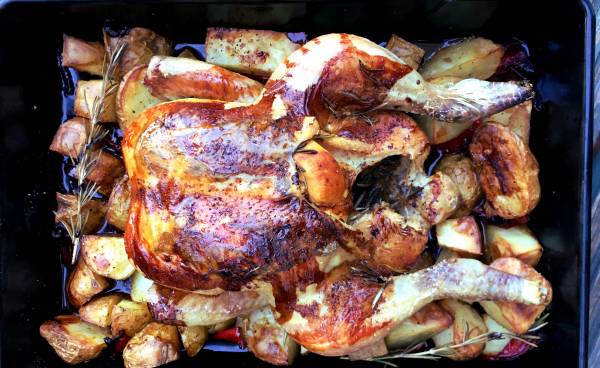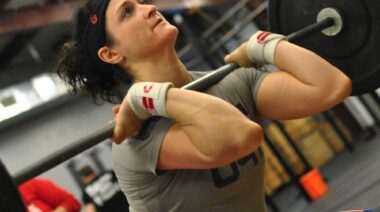This article was written by Matt Whitmore.
If you follow Fitter Food, you’ll know our approach to nutrition is a simple one. This hasn’t always been the case. I’ve been as guilty as the next guy of overcomplicating my quest to find the perfect diet to build muscle and maximise performance.
My finest moments have included measuring and tracking every macronutrient of food I consumed, intermittent fasting, carb backloading, carb cycling, and a questionable attempt at the ketogenic diet. When you start peeing on sticks in the name of nutrition, you know you’ve gone too far. The approach I take now is a lot less complicated.
3 Nutritional Strategies Every Athlete Needs
I find the simpler my nutritional approach, the more successful I am in achieving results that are sustainable. With this in mind, these are my top three nutritional strategies for athletes. They’ve helped a lot of our clients make considerable progress towards their health, fat loss, and performance goals.
For sustainable results in the gym, keep your nutrition plan simple and consistent.
1. Hit Your Protein Goal (But Don’t Lose Sleep Over It)
I used to think that nutrition for lean muscle building should be all about the protein. I made the assumption that twice the recommended amount of protein would bring twice the results. I’d blow my protein goal out of the water every single day and keep a couple of chicken drumsticks tucked behind my ears for emergencies. I was wrong. It’s just not necessary to consume that amount of protein. It can be a huge stress on your digestive system, and pretty expensive to boot.
Take the simpler approach. Trusted research recommends between 1.5 – 2g of protein per kilogram of bodyweight in trained individuals.1 Use these guidelines as a starting point to estimate your own requirements. For example, I weigh around 100kg, so somewhere between 150-200g of protein is ideal for me.
Once you have your intake range, familiarise yourself with the protein content of the foods you frequently eat. I’ve given some examples below to get you started.
- 1 breast of chicken = 25-30g protein
- 1 fillet of salmon = 20-25g protein
- 1 homemade beef burger = 20-25g protein
- 1 sirloin steak = 25-30g protein
- 1 egg = 6g protein
- 1 portion of beef jerky = 15-20g protein
- 1 whey protein shake = 25-30g protein
- 1 avocado = 4g
- 3 Tbsp of hummus = 4g
- 1 handful nuts = 7g
Next, plan your meals around your protein goal to ensure you fall within its range on a consistent basis to support your training. For my protein goal, a typical day looks like this:
- Breakfast: 4 scrambled eggs, half an avocado, wilted spinach, 3 rashers of bacon (35g protein)
- Post Workout: Whey protein shake (30g protein)
- Lunch: Salmon fillet, salad, feta cheese, green vegetables (40g protein)
- Snack: A homemade burger (25g protein)
- Dinner: Piri-Piri chicken, sweet potatoes, green vegetables, salad (30g protein)
Daily total = 160g protein
Keep things simple and uncomplicated. If you fall short on your protein intake one day, don’t lose sleep over it. Training, lifestyle, rest, and stress all play fundamental roles in your performance and it’s not the end of the world.
2. Eat Mindfully and Intuitively
A big focus with our clients is to educate athletes and empower them to make better decisions with food, based on an intuitive understanding of their own needs. You don’t have to track your macros minutely to get results. Believe it or not, MyFitnessPal didn’t exist a few years ago and people still succeeded in their health and fat loss goals.
The key is to eat more mindfully. Implement simple nutrition strategies such as increasing carbohydrates and lowering fat intake on training days, but also learn to listen to your body’s feedback as well. It’s not conducive to anyone’s digestion or satiation to wolf food down quickly and mindlessly in front of the TV. Your body needs time to digest food sufficiently to experience the hormonal responses that indicate fullness.
“Understanding your individual needs and the daily feedback provided by your body will ultimately be your best tactic for long term success.”
To incorporate a more mindful eating routine, eat in a relaxed, calm environment and take the time to chew your food sufficiently. Avoid eating on the go and try not to multitask on on your smartphone or laptop whilst you’re eating. Mastering a more intuitive eating process means you’ll eat when you’re actually hungry rather than relying on calorie counting. You’ll learn to recognise the difference between boredom, real hunger, and just plain greed. As humans, we’re incredibly intelligent but we’ve lost our ability to understand our natural dietary instincts. Reclaim this ability with intuitive eating.
3. Invest In Food Quality First
Athletes can be unbelievably focused on macronutrients and the latest supplements, but they can pay precious little attention to the quality of their food. This is especially true of protein. Back in my protein-obsessed days not only was I consuming too much protein, most of it was of poor quality to keep my costs down. The more I understood about welfare standards and the benefits of sourcing produce locally, the more important food quality became to me.

It matters where your food comes from.
Although free range, grass fed, and organic meats and produce may seem more expensive, if you step back and assess where you make your health investments, you’ll find you’ll happily shell out hundreds of pounds for workout gear only to moan about the expense of higher quality ingredients.
Invest in superior food sources and opt for organic and locally reared food as often as your budget and schedule allows. Cut out the middle man and head to a farmer’s market or farm shop to get good quality produce at cheaper prices – they frequently reward loyal customers with discounts. If all else fails, stock up on cheaper, high quality options like tinned fish or eggs.
Practice Simplicity For Success
Simplifying your approach to nutrition is the key to making positive and sustainable changes to your health and performance. It takes practice, and you may need the help of a few apps and trackers initially, but understanding your individual needs and the daily feedback provided by your body is your best tactic for long term success.
More Like This:
- Eat to Perform: 6 Simple Strategies for the Busy Athlete
- Save Time and Money: Streamline Your Meal Prep
- Let’s Talk About Protein: When, Where, and How Much Do You Need?
- New on Pulse Beat Fit UK
Photos courtesy of Fitter Food.
References:
1. Phillips, S. & Van Loon L. (2011) Dietary protein for athletes: from requirements to optimum adaptation. Journal of Sports Science.






